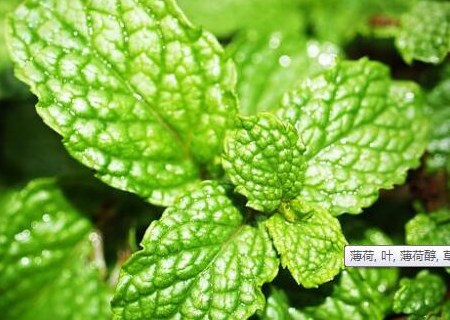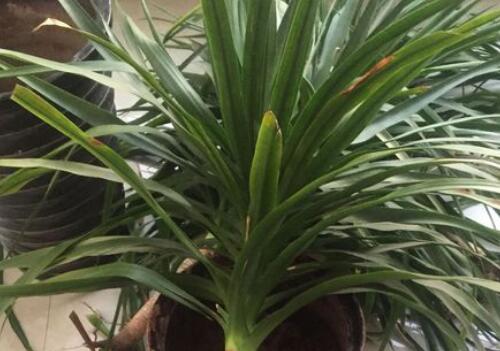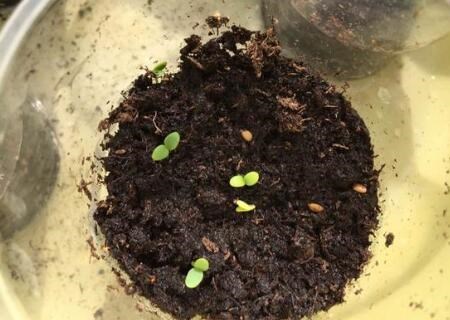What are the seed planting methods of Magnolia incense (also known as fragrant mint)? What's the value? How much is the seed per jin?
Magnolia incense, like moisture, light, suitable for weakly acidic soil, stem and leaf distillation can extract Magnolia oil, can be used as medicine or edible, with high planting value. So what are the seed planting methods of Magnolia angustifolia? What's the value? How much is the seed per jin? In a farmer, we learned that the seed price of Magnolia incense is about 200 yuan per jin, and the price of different quality is different in different regions.

I. seed planting method of Magnolia incense
1. Methods of reproduction
Because of the great variation of seed reproduction, asexual reproduction is often adopted in production.
① rhizome propagation. In early spring, the underground rhizome of Magnolia incense was turned up, and the fresh rhizome with strong, white, dense nodes and no diseases and insect pests was selected, cut into 6-8 cm long root segments, and placed in the open planting ditch, with a depth of 6-8 cm and a distance of about 25 cm. When placed, each section of rhizome should be connected from beginning to end, and immediately covered with soil, compacted and watered. Each mu of field needs to plant 100 kg of rhizome, and the rhizome of Honda can be transplanted to 8 mu of field per mu.
② ramets were propagated. In early spring, when the new seedlings of Magnolia incense grew to about 8 cm in the previous year, the roots were dug up together and the ramets were transplanted. 2 plants were planted in each hole with a row spacing of 25 cm and a plant spacing of 10 cm.
③ cutting propagation. From May to June, strong aboveground stems were selected, cut into small segments 6 cm long, and cut on the seedbed, rooting and transplanting after survival. No matter which way of breeding, fine soil preparation should be made before planting, and sufficient bottom fertilizer should be applied. The width of the field is about 1.3 meters, so as to facilitate drainage, irrigation and management.
2. Cultivation techniques.
① opens soil moisture
Reduce dampness and soil moisture, dig ditches, lower groundwater level, open ditches, ditches and rivers, smooth drainage, stop rain and dry fields, reduce humidity and eliminate waterlogging damage, and create an environment conducive to crop growth but not to the occurrence of diseases. A field block, two ends out of water, three ditches matching, empty on all sides. The soil moisture ditch spacing is 2.4 meters, the waist ditch interval is 30 meters, and the field block ditch distance is 50 meters. After the emergence of the first and second stubble orchid incense, it is necessary to clear the ditch and bury the soil moisture in time.
② density
Reasonable close planting of Cymbidium incense has strong branching ability, many branches and low node position. The suitable density of the first stubble is about 10 000 plants / mu, the row spacing is about 0.4mm, the plant spacing is about 0.17m, and the suitable density of the second stubble is 4-45000 plants / mu. Artificial or mechanical thinning of seedlings must be carried out to control the density and enhance ventilation and light transmission.
③ weeding
The temperature in the seedling stage is relatively low, so we must seize the opportunity to loosen the soil and weed 2-3 times before closing the row (seedling height 15-20 cm). When loosening the soil, the plant is shallow and loose, but the rows can be deeper, and the soil should be loosened in time after rain. In addition, weeds should be removed once before harvest to prevent weeds from mixing during harvest and affect the quality of oil.
④ fertilization
The growth period of Magnolia lanceolata is more than 250 days, and it is a crop that needs more fertilizer. In addition to applying sufficient base fertilizer before breeding, it must be fertilized properly for 2-3 times. Before and after the first Qingming Festival, when the seedling height was about 7 cm, 4 kg of urea was applied to the roots per mu to promote seedling growth; the second time, in the first and middle of May, nitrogen and phosphorus were applied simultaneously, using 8-10 kg of compound fertilizer or ammonium sulfate or 25 kg of cake fertilizer per mu, 10 cm from the seedling, to meet the needs of branches and leaves. The third time before and after "Grain in Beard", the method of seedling fertilization was adopted, and the general combined application of nitrogen, phosphorus and potassium was about 30kg per mu. [5]
Scientific fertilization to control nitrogen fertilizer, increase the application of phosphorus and potassium fertilizer, coordinate the proportion of nitrogen, phosphorus and potassium in the plant, and enhance disease resistance. The base fertilizer is mainly organic fertilizer, supplemented by chemical fertilizer, and chemical fertilizer is dominated by phosphorus and potassium fertilizer, supplemented by nitrogen fertilizer. Topdressing is mainly chemical fertilizer, supplemented by organic fertilizer, while organic fertilizer is dominated by nitrogen fertilizer and supplemented by phosphorus and potassium fertilizer. The ratio of nitrogen, phosphorus and potassium is 0.15, 0.65, 0.15.
2. What is the value of Magnolia incense
① for medicinal purposes
The plant contains aromatic oil, with an oil content of 0.6-0.7%. The oil is called Magnolia oil or green mint oil, and the main component is fragrant drought.
Celery oil mushroom ketone (content is 60-65%), in addition, there are lemon hydrocarbons, celery sesame oil hydrocarbons, etc., mainly used in candy, toothpaste spices, but also for medicine. Leaves, twigs or whole herbs are also used to treat colds, fever, cough, fatigue cough, colds, headache, sore throat, nervous headache, gastrointestinal flatulence, blood stasis pain, eye pain, epistaxis, black therapy, general numbness and infantile furuncle.
Whole grass (Magnolia incense): Xin, Gan, lukewarm. Dispelling wind and dispelling cold, relieving cough, detumescence and detoxification. For colds, coughs, stomachaches, abdominal distension, neurological headaches; external use for swollen pain, red eyes, infantile sores and furuncles.
② edible
Twigs and leaves are often eaten as seasoning spices. Can be added to condiments to increase the flavor of cooking, individual or mixed with other herbs as refreshing tea, Indians also use mint to deworming and killing fleas.
③ chemical industry
It contains more than 190 ingredients, including caryophyllone (up to 50% Mel 70%), Ramene (20% Muthyl 30%) and dihydrocarylidone, dihydrocaramel, new dihydrocaramel, dihydrocaramel acetate, cis-caramel acetate, menthone, nerol acetate, geraniol, isobornyl acetate, menthone, pinene and so on. The content of caryophyllone is lower, but the content of cineole and linalool is higher. It is obtained from the fresh stems and leaves of Labiatae plant Magnolia (green mint) by steam distillation. Production is available in China, Europe and the United States. Magnolia oil is commonly used in toothpaste, soap, chewing gum and medicine.
Time: 2019-03-17 Click:
- Prev

Can I plant dragon blood trees at home? Is it poisonous? How to water aquaculture? How to trim the bifurcations?
Dragon blood tree, also known as: bleeding tree, blood-activating holy medicine, plant birthday. Also known as horse mule sugarcane tree, narrow leaf dragon blood tree, long flower dragon blood tree, not just tree, bamboo ginseng and so on. Can we plant dragon blood trees at home? Is it poisonous? How to water aquaculture? How to trim the bifurcations? Can we plant dragon blood trees at home?
- Next

What are the planting methods of flower seeds of Cruciferae bees? What kind of environment is suitable for? When will the seeds be sown?
Bee chamber flowers, Cruciferae biennial herbs, dense branches and leaves, short plants, dense flowers. It is widely cultivated in courtyards and gardens. So do you know what are the methods of planting beehive flowers? What kind of environment is suitable for? When will the seeds be sown? According to the information of the Plant Research Institute, if you are in the area
Related
- Fuxing push coffee new agricultural production and marketing class: lack of small-scale processing plants
- Jujube rice field leisure farm deep ploughing Yilan for five years to create a space for organic food and play
- Nongyu Farm-A trial of organic papaya for brave women with advanced technology
- Four points for attention in the prevention and control of diseases and insect pests of edible fungi
- How to add nutrient solution to Edible Fungi
- Is there any good way to control edible fungus mites?
- Open Inoculation Technology of Edible Fungi
- Is there any clever way to use fertilizer for edible fungus in winter?
- What agents are used to kill the pathogens of edible fungi in the mushroom shed?
- Rapid drying of Edible Fungi

